Angiosperms (GK. angio- vessel, sperma- seed) are those plants in which seeds are formed inside fruit and the sporophylls are organised into flowers. Hence, they are called flowering plants.
The main characteristics of angiosperms are:-
> They range in size from tiny, almost microscopic Wolfia (Smallest angiosperm) to tall trees of Eucalyptus (over 100 meters).
> Angiosperms are divided into two classes- on the basis of number of embryonic leaves or cotyledons:-
(i) Dicotyledons:- The dicotyledons are characterised by seeds having two cotyledons, reticulate venations in leaves and tetramerous or pantamerous flowers i.e. having four or five members in each floral whorls.
(ii) Monocotyledons:- The monocotyledons on the other hand are characterised by single cotyledonous seeds, parallel venation in leaves and trimerous flowers having three members in each floral whorls.
> Angiosperms are the most recently and highly evolved plants.
> A flower is the shoot modified for reproduction. The male and female sex organs of a flower are stamen and pistil/carpel respectively
> A microsporophyll or stamen of a slender filament and an anther at the tip. Within the anthers, the pollen mother cell divides by meiosis to produce microspores which nature into pollen grains.
> The female sex organ, pistil consists of an ovary at its base, a lung slender style and stigma. Inside the ovary ovules are present. Generally each ovule has a megaspore mother cell that undergoes meiosis to produce haploid megaspores.
> Three of them degenerate and one divide to form female gametophyte or embryo sac (7 celled and 8 nucleate) inside ovule.
> Pollen grains or microspores reach stigma through pollination.
> Archegonia are absent. Instead, there is one oosphre surrounded by two specialised synergid cells (egg apparatus) inside the embryo sac. Apart from egg apparatus, antipodals and central cell are also present.
> There is double fertilisation (syngamy and triple fusion).
> Endosperm is formed through triple fusion and is generally triploid. Embryo is formed by syngamy.
> Fertilised ovules ripen into seeds. The seeds are covered by fruits. A fruit is technically a ripened ovary. Fruits not only protect the seeds but also help in their dispersal.
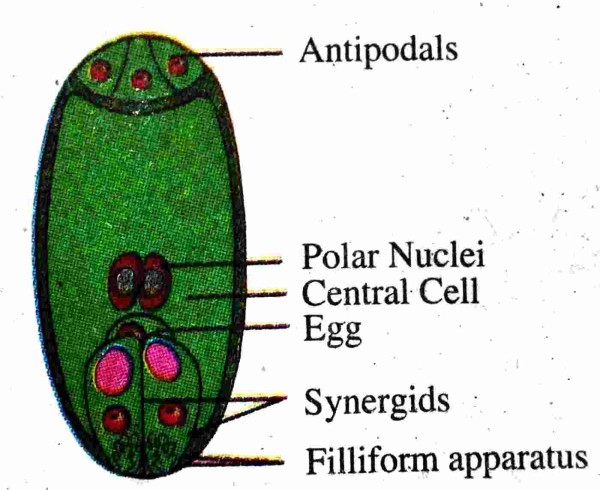
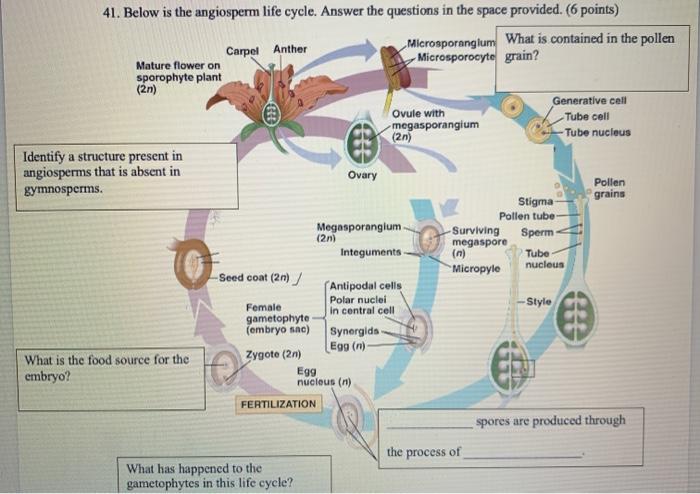
ECONOMIC IMPORTANCE OF ANGIOSPERMS
(i) Food:- Flowering plants are the major sources of food. They produce cereals such as wheat, rice, etc. vegetables such as a potato, tomato, carrot, etc and fruits such as apple, mango.
(ii) Edible oils:- Flowering plants are the main source of edible oils used for cooking. These are obtained from groundnut, mustard, sunflower, coconut etc.
(iii) Spices:- Common spices are obtained from various parts of flowering plants such as coriander, cloves, black pepper, etc.
(iv) Beverages:- Coffee and cocoa are the common beverages obtained from the flowering plants.
(v) Medicines:- Some of the important medicinal plants are quinine, belladonna, ashwagandha etc.
(vi) Timber:- Many angiosperms, particularly dicotyledons, yield valuable hard wood which is used as timber e.g. teak, oak, sisham, sandalwood etc.
(vii) Fibres:- Fibres of different qualities are obtained from various species of flowering plants, e.g. Textile fibres are obtained from cotton.
FUNFACTS
Most Diverse Group: Angiosperms, also known as flowering plants, are the most diverse group of land plants, with over 300,000 species described to date. They dominate nearly every terrestrial habitat and play crucial roles in ecosystems worldwide.
Flower Power: Angiosperms are characterized by the presence of flowers, which are reproductive structures specialized for attracting pollinators and producing seeds. Flowers come in a stunning array of shapes, sizes, colors, and fragrances, making them some of the most diverse and beautiful structures in the plant kingdom.
Fruitful Endeavors: Angiosperms produce fruits, which are structures formed from the ripened ovary of a flower. Fruits serve as protective enclosures for seeds and aid in their dispersal by animals, wind, or water. They come in various forms, including berries, nuts, pods, and capsules.
Culinary Delights: Many of the foods we eat are derived from angiosperms. Fruits such as apples, oranges, bananas, and strawberries, as well as vegetables like tomatoes, carrots, and broccoli, are all produced by flowering plants. Grains such as rice, wheat, and corn are also angiosperms.
Medicinal Marvels: Angiosperms have long been used in traditional medicine for their medicinal properties. Many pharmaceutical drugs are derived from compounds found in flowering plants, including aspirin (from willow bark), morphine (from opium poppy), and quinine (from cinchona bark).
Environmental Stewards: Angiosperms play crucial roles in maintaining ecosystem health and function. They provide habitat and food for countless organisms, contribute to soil fertility, regulate the water cycle, and help mitigate climate change by sequestering carbon dioxide from the atmosphere.
Fast Growth: Some angiosperms are among the fastest-growing plants on Earth. For example, bamboo, a type of grass, can grow several feet in a single day under optimal conditions. This rapid growth makes bamboo a valuable resource for construction, papermaking, and other industries.
Ancient Origins: Despite their diversity and widespread distribution today, angiosperms are relatively young in evolutionary terms. They first appeared around 130 million years ago during the early Cretaceous period and rapidly diversified to become the dominant group of plants by the late Cretaceous.
Mutualistic Relationships: Angiosperms have co-evolved with a diverse array of pollinators, including insects, birds, bats, and other animals. These mutualistic relationships benefit both the plants and the pollinators by ensuring successful pollination and seed production.
Global Impact: Angiosperms have had a profound impact on human cultures and societies worldwide. They have inspired art, literature, and cultural traditions for millennia and continue to provide essential resources for food, medicine, shelter, and livelihoods around the globe.
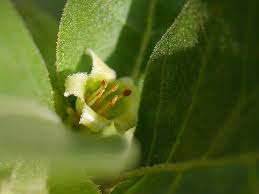
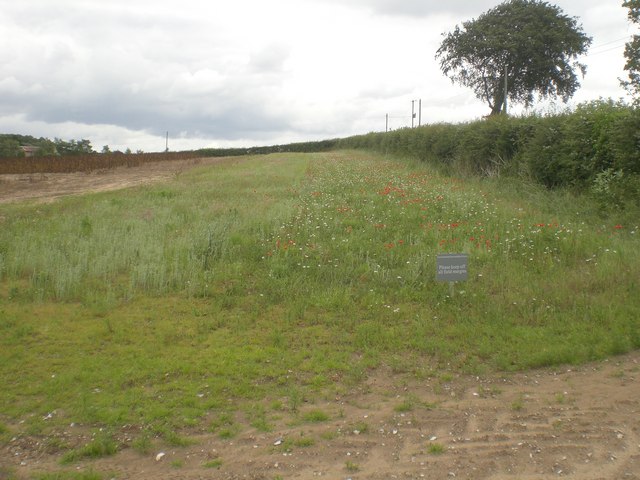
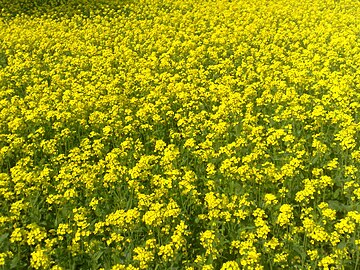
FAQs
- Angiosperms, also known as flowering plants, are a group of plants characterized by the presence of flowers and seeds enclosed within a fruit. They are the most diverse and widespread group of land plants, with over 300,000 species described.
- Angiosperms are distinguished by several key features, including the presence of flowers for sexual reproduction, seeds enclosed within a fruit, double fertilization, and the production of endosperm, a nutritive tissue within the seed.
- Angiosperms play crucial roles in ecosystems and human societies. They provide food, medicine, oxygen, shelter, and habitat for countless organisms. They also contribute to soil fertility, regulate the water cycle, and help mitigate climate change by sequestering carbon dioxide.
- Angiosperms encompass a vast diversity of plant species, including trees, shrubs, herbs, grasses, and aquatic plants. Common examples include oak trees, roses, sunflowers, wheat, rice, orchids, and tulips.
- Fruits develop from the ovary of a flower after fertilization and serve to protect and disperse seeds. They come in a variety of forms, including fleshy fruits (e.g., apples, berries), dry fruits (e.g., nuts, capsules), and aggregate fruits (e.g., raspberries, strawberries).
- Angiosperms are classified into two main groups: monocots and dicots, based on the number of cotyledons (seed leaves) in their embryos. Monocots have one cotyledon, parallel leaf venation, and floral parts in multiples of three, while dicots have two cotyledons, netted leaf venation, and floral parts in multiples of four or five.